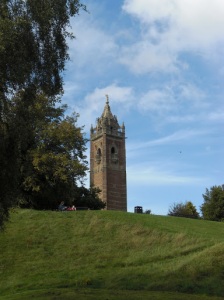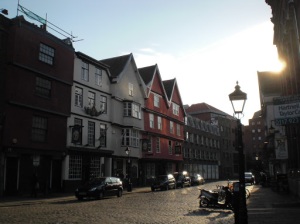Last week, I let you in on how Brussels swept me away with its enchanting architecture and the beauty of some of its main landmarks, the Grand Place and the Cathedral. Today I want to show you another side of the Belgian capital. One thing that all the guide books point out about Belgium is that it is a bit weird – in the good sense of the word. It is that sense for the grotesque, absurde, bizarre that makes Belgium what it is. The most cited example for this is Manneken Pis – the statue of the little boy peeing that is perceived as the iconic symbol for Belgium: small, weird, and leaving you with a slight sense of „WTF?“ While I get that he’s funny, I thought there were a lot of things going on in Brussels that displayed the same thing, but did it with less of a hype around them, which is much more supportive to the nature of the sentiment itself.
It started when I was walking along Rue d’Arenberg, in the very city center, and came across this very cool sign:

Cinema Nova is Brussels‘ downtown non-profit cinema
Looking at it, I felt directly transported into a Tim Burton film. The different figures looked so alive, so full of character, and yet the cinema behind it did not seem to be very prominent or chic. The internet tells me it is a non-profit place, so I would expect a certain level of hipsterdom to be included, but who cares about that when it is so lovingly done. I felt like standing there and having quiet conversations with those little people in the sign for hours, finding out if they carried the character that they displayed on the outside and turning them into a children’s book. I didn’t, but really just because it was so cold that day.
I also fell in love with this dress:

Window Shopping in Saint Gilles – thanks to Jenny and Luise who let me know that the label’s name means „But where is the sun?“ I guess that is a question that has some validity in Brussels.
I would never wear this (apart from the fact that I probably couldn’t, even if I wanted to!), but I thought it was so individual and fun – and I am not a fashion victim. To tell you the truth, if anyone described an item of clothing to me as „fun“ I wouldn’t know what they meant. But this dress – and the ones to the side – were equally pretty and fun. I felt about the fashion at „Mais il est ou le soleil“ that, like many things in Brussels, it didn’t take itself too seriously while still keeping up a high standard.
Something a little more prone to show up in guide books, also very Belgian and a tad funky were the comic strip pictures randomly strewn about walls in the city.

 I especially loved the one with the pillar. Very self-referential to draw an edifice on an edifice. The cultural studies nerd inside of me must have come out when I noticed this. In general those little pictures just added something cheerful to the sometimes stern and grey urbanity (because inspite of the architectural beauty I raved about last week, Brussels also has some seriously ugly corners – all part of the absurd mix that makes the place what it is!).
I especially loved the one with the pillar. Very self-referential to draw an edifice on an edifice. The cultural studies nerd inside of me must have come out when I noticed this. In general those little pictures just added something cheerful to the sometimes stern and grey urbanity (because inspite of the architectural beauty I raved about last week, Brussels also has some seriously ugly corners – all part of the absurd mix that makes the place what it is!).
And what do you do in a place like this if you want to have a nice view over the city? No mountains close by (welcome to Northern Europe!). Not really a tower to climb either. Those two options would be too conventional anyway. No, in Brussels, you take the elevater to the tenth floor, that is the roof top, of Parking 58, a run down and dirty car park in the city center, close to the Metro station de Brouckere and just behind Place Saint-Catherine.

View from Parking 58 onto the Cathedral

View from Parking 58 onto Grand Place and the town hall
It is a bit strange to go up in the elevator that feels like it belonged in a museum and might just stop at any second – but the views are stunning indeed.
A place that absolutely amazed me – and in which I thought the amiable randomness of Brussels culminated – was the Flea Market at Jeu de Balle.

Jeu de Balle Flea Market which is on every day – beautiful chaos!
Berlin prides itself in having a flea market culture – but compared to this, Berlin’s markets are commercialized, capitalist shopping malls. Now this was a true flea market. I half expected to leave carrying those little parasites with me. It would have fit. There was anything and everything to buy at the stands, mostly old useless crap, but put together it felt like the entire world was spread out on those carpets and put itself on display in infinite beauty.

Who wouldn’t want a rusty yet charming candelabra like this in their flat? I adore it!

Look at those porcellaine ladies seductively, nay, lasciviously flinging their legs…
My last discovery was at the Christmas Market at Place Saint Catherine. My friend Stan had told me to go to see the carousel. To be honest I nearly skipped it. How interesting could that be? Turns out very! It wasn’t just any weird ride. It was a beautiful old-fashioned carousel with carefully created creatures on it, purposefully looking a bit morbid and run down, but ever so enchanting, with a beautiful nostalgic quality. Even the music that it played transported me about a hundred years back in time, and watching the children ride it with such enthusiasm and pure joy was a true gift on that cold winter day.
Brussels was definitely wonderfully weird in addition to being pleasingly pretty. It had so many surprises ready for me, and I loved its slight randomness and the quirky little things that were to discover everywhere. I am sure there must be tons more of them. I have a feeling that this wasn’t my last trip to Belgium.
Did Belgium surprise you with anything bizarre, wacky, absurd or funny? Have you made random discoveries like mine in any other place? Tell us about it in the comments!
 I didn’t spend much time, and to be quite frank, getting off the train the town made a rather dull impression on me. But when my work commitment was done and I was walking with my colleague through town to the smaller regional train station, the sun had come out and Germersheim presented itself as quite charming.
I didn’t spend much time, and to be quite frank, getting off the train the town made a rather dull impression on me. But when my work commitment was done and I was walking with my colleague through town to the smaller regional train station, the sun had come out and Germersheim presented itself as quite charming.









































